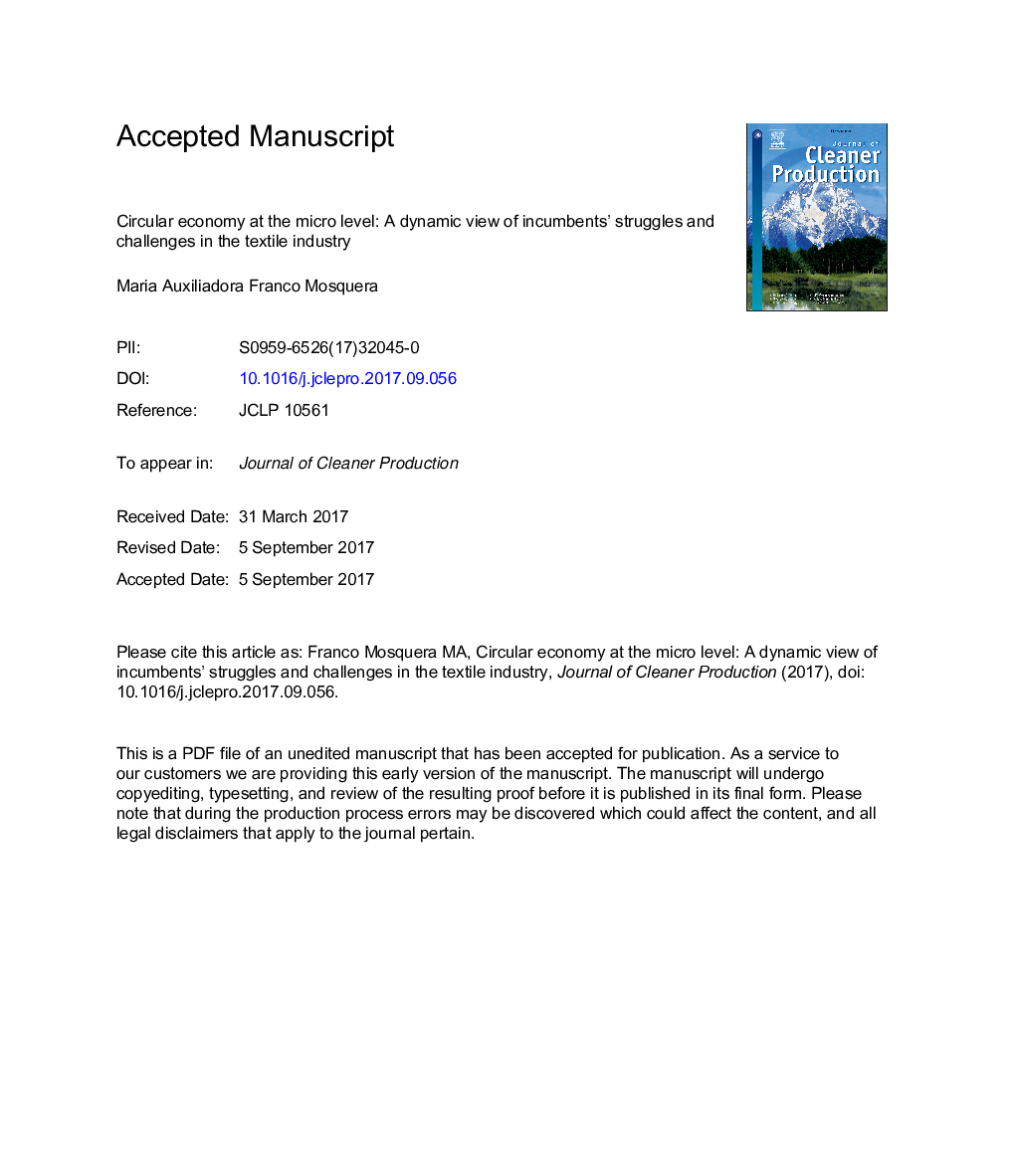| Article ID | Journal | Published Year | Pages | File Type |
|---|---|---|---|---|
| 5479850 | Journal of Cleaner Production | 2017 | 30 Pages |
Abstract
The Circular Economy (CE) has received considerable attention as an approach that promises to reconcile ecological systems and economic growth. In spite of its increased popularity, little is known about the implementation struggles of incumbent firms across industrial sectors. Furthermore, although the notion of circular production systems is at the intersection of different research areas such as sustainable product design, sustainable supply chains, and reverse logistics, knowledge on how these concepts combine to ease or impede firms' transition towards circularity is scarce. To shed light on these gaps, I used multiple case studies from Cradle to Cradle certified companies in the textile industry in Europe. By employing qualitative research, I identified a set of factors along the textile value chain, from product design to take-back and reprocessing, that are crucial in expediting or delaying a firm's aspirations to develop a circular product. The main contribution of this paper is the dynamic understanding of how certain collaborative supplier-buyer innovation factors (i.e., supply chain position, power balance, and a shared vision) coupled with complex aspects in product design, namely in basic materials, architecture, and functionality, combine to determine the output speed and quantity of circular products to be sold, taken back, and ultimately regenerated.
Keywords
Related Topics
Physical Sciences and Engineering
Energy
Renewable Energy, Sustainability and the Environment
Authors
Maria A. Franco,
